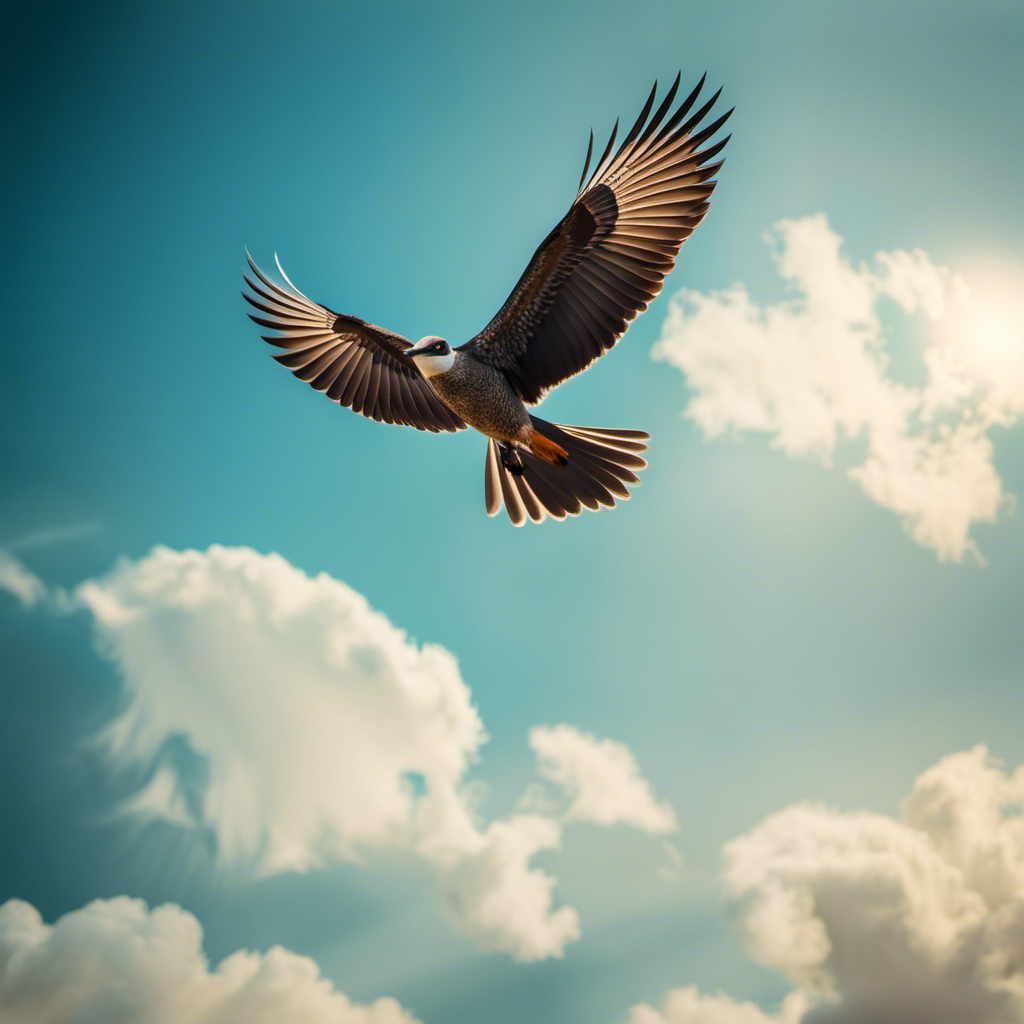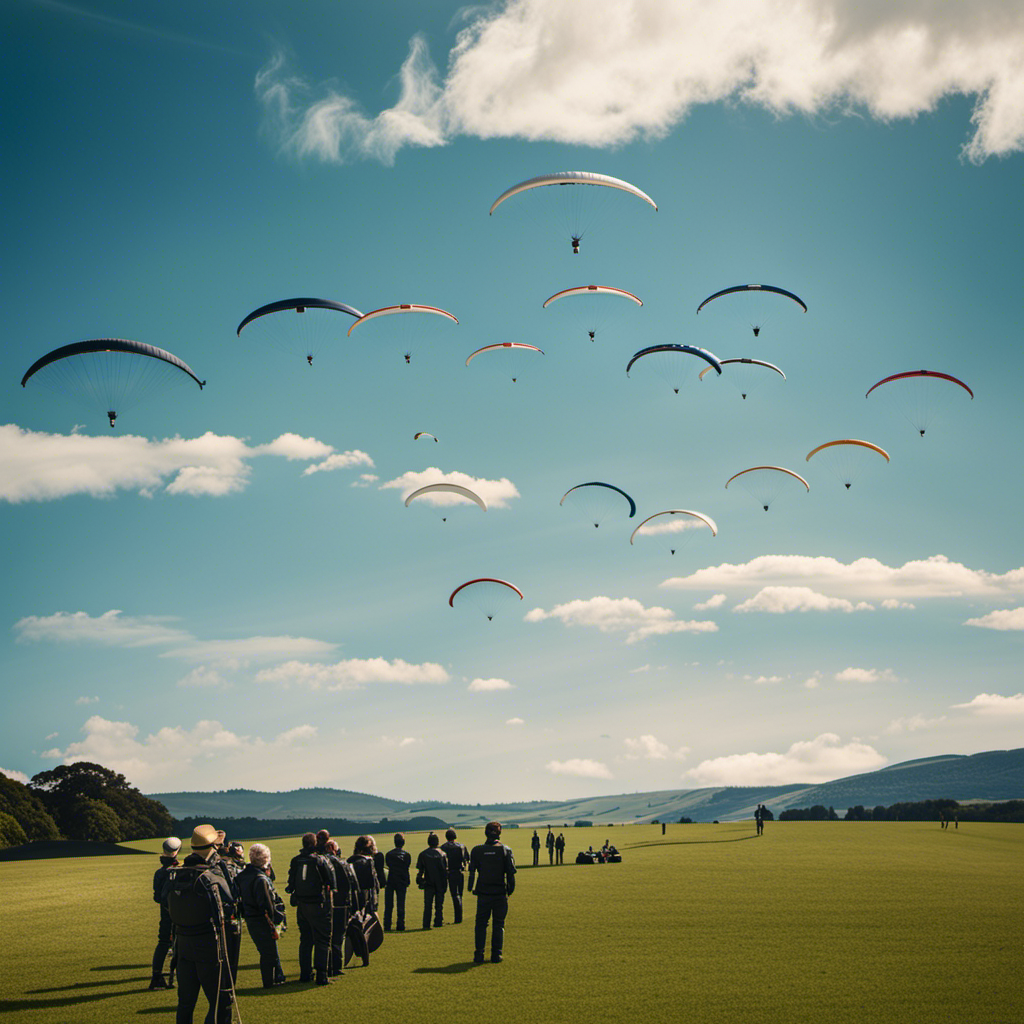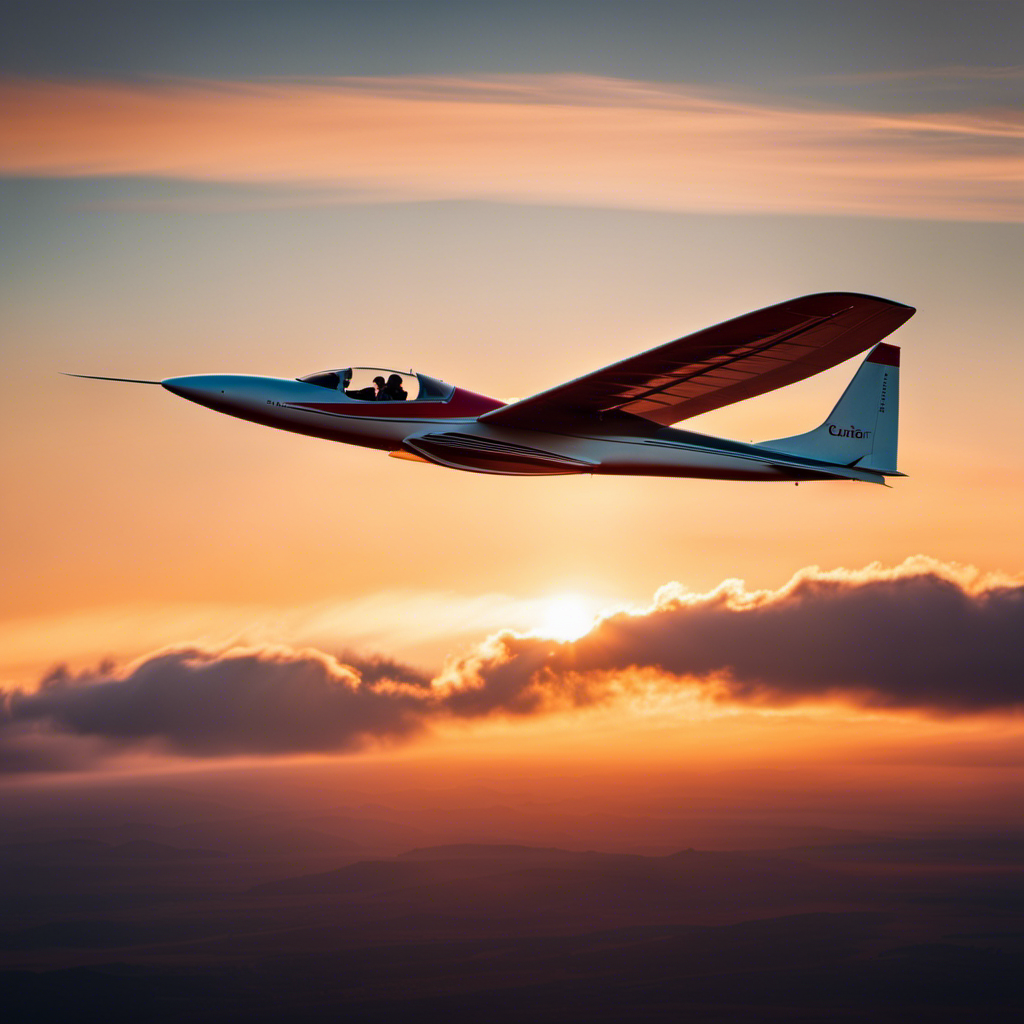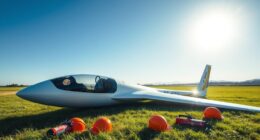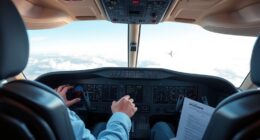As I delve into the fascinating world of animal behavior, I am fascinated by the concept of gliding. What does gliding actually involve for an animal? This question motivates me to unravel the enigmas surrounding this impressive ability.
From the graceful soaring of flying squirrels to the stealthy glides of flying snakes, I aim to uncover the mechanics, adaptations, and evolutionary origins of gliding in animals.
Join me as we explore this captivating phenomenon and its significance in the animal kingdom.
Key Takeaways
- Gliding involves using specialized adaptations and gravity to move through the air.
- Gliding adaptations include elongated limbs, skin flaps, or specialized membranes.
- Gliding expands habitat range and access to food sources for animals.
- Gliding is advantageous in complex terrains and helps animals navigate obstacles.
How Gliding Works in Animals
To understand how gliding works in animals, you need to know that it involves using specialized adaptations and the force of gravity to move through the air. Gliding techniques vary among different species, but they all rely on the same basic principles of aerodynamics.
Animals with gliding abilities possess structural features such as elongated limbs, flaps of skin, or feather modifications that help them create lift and control their descent. By extending their bodies and utilizing these adaptations, they can generate enough lift to stay airborne and glide over long distances.
Aerodynamics in gliding is crucial for animals to maintain stability and control during flight. Understanding the mechanics of gliding helps us appreciate the remarkable adaptations that allow animals to navigate the skies without the need for powered flight.
Now, let’s explore the different types of gliding animals.
Types of Gliding Animals
When it comes to gliding animals, there are various groups that have developed this unique ability.
First, mammals such as flying squirrels and colugos have evolved the ability to glide through the air using specialized skin flaps.
Secondly, reptiles and amphibians like flying lizards and flying frogs have also adapted to gliding, using their elongated limbs and webbed feet to navigate through the air.
Lastly, insects and arachnids, such as certain species of ants and spiders, have developed wings or specialized silk threads that allow them to glide and maneuver in their environments.
Mammals that Glide
Mammals like flying squirrels and sugar gliders use a special membrane to glide through the air. This adaptation allows them to navigate the treetops with ease. Here are four interesting facts about the gliding adaptations of these mammals:
-
Patagium: Flying squirrels and sugar gliders have a stretchy membrane of skin called a patagium that extends between their forelimbs and hindlimbs. This membrane acts like a parachute, providing them with the surface area needed to glide.
-
Glide Ratio: These mammals have developed a high glide ratio, which means they can cover a significant horizontal distance for every unit of vertical descent. This allows them to efficiently move through the forest canopy.
-
Adapted Limbs: Their limbs are modified for gliding. The forelimbs are elongated and equipped with strong claws for gripping tree bark, while the hindlimbs have a wide range of motion to control their trajectory.
-
Tail Stabilization: To maintain stability during gliding, flying squirrels and sugar gliders use their long, bushy tails as rudders. They can manipulate their tails to steer and make precise adjustments in mid-air.
With these remarkable gliding adaptations, mammals in trees have mastered the art of aerial locomotion.
In the next section, we will explore the fascinating world of reptiles and amphibians that also glide effortlessly through the air.
Reptiles and Amphibians that Glide
Reptiles and amphibians, like flying lizards and flying frogs, have evolved unique adaptations to glide through the air. These remarkable creatures possess elongated ribs or skin flaps that allow them to catch air currents and glide effortlessly.
Reptiles such as the Draco lizard and amphibians like the Wallace’s flying frog have developed specialized structures to enhance their gliding abilities. By extending their ribcages or expanding their webbed feet, they are able to generate lift and control their descent. This form of locomotion allows them to navigate through the forest canopy or across bodies of water, expanding their habitat range and accessing new food sources.
However, while reptiles and amphibians are proficient gliders, they are not the only animals capable of this remarkable ability. Insects and arachnids also possess adaptations for gliding, but their mechanisms differ significantly.
Insects and Arachnids that Glide
Insects and arachnids, like the flying squirrel spider and the gliding ant, have developed unique adaptations to soar through the air. Gliding is a remarkable ability found in certain insect and arachnid species that allows them to traverse distances and escape predators.
Here are four fascinating examples of insect and arachnid gliding:
-
The flying squirrel spider: This arachnid possesses a flat body shape and a web that acts as a parachute, enabling it to glide effortlessly from tree to tree.
-
The gliding ant: Using its elongated legs and a specialized exoskeleton, this ant can glide between trees, covering significant distances to find food or establish new colonies.
-
The winged aphid: These tiny insects are equipped with wings that allow them to glide on air currents, helping them disperse to new plants and avoid predators.
-
The dragonfly: With its long, slender body and broad wings, the dragonfly can glide and maneuver with exceptional agility, making it a formidable predator in the air.
These remarkable adaptations for gliding highlight the incredible diversity and ingenuity found in the world of insects and arachnids.
Adaptations for Gliding
To glide through the air, animals have specific adaptations like elongated limbs and skin flaps. These gliding adaptations have evolved in various groups of animals and have significant evolutionary significance.
For instance, in mammals, such as flying squirrels and colugos, elongated limbs and a patagium, a membrane of skin between the forelimbs and hindlimbs, allow them to glide from tree to tree.
Similarly, in reptiles, like flying lizards and snakes, the ability to glide has been achieved through the modification of their ribs and skin flaps.
These adaptations not only enhance the mobility of these animals but also provide them with advantages such as accessing new food sources or escaping predators.
This transition from gliding adaptations to the benefits of gliding highlights the ecological success of animals that have evolved this remarkable ability.
Benefits of Gliding
Gliding in animals refers to the ability to move through the air by utilizing gliding membranes or other adaptations. In this discussion, we will explore the benefits of gliding, focusing on three key points.
Firstly, gliding provides an efficient mode of travel. It allows animals to cover large distances quickly and with minimal energy expenditure. This is especially advantageous for species that inhabit forested areas or other environments with complex terrain, where gliding allows them to navigate obstacles and reach distant food sources or mating sites.
Secondly, gliding offers advantages in terms of predatory and foraging behaviors. Some animals, such as flying squirrels, use gliding as a hunting strategy. By gliding from tree to tree, they can surprise their prey and access food sources that would otherwise be inaccessible. Other animals, like sugar gliders, use gliding to forage for fruits, nectar, or insects in different parts of their habitat.
Lastly, gliding enables animals to employ escape and survival tactics. When faced with predators or other threats, gliding allows animals to quickly and effectively escape from dangerous situations. Some species even use gliding as a means of avoiding ground-based predators altogether. Additionally, gliding can help animals find safe locations to rest or hide, contributing to their overall survival.
Efficient Mode of Travel
Bats use gliding as an efficient mode of travel. Gliding allows them to cover large distances while conserving energy. They have developed efficient gliding techniques that enable them to navigate through the air effortlessly.
One such technique is called the ‘wingtip vortex reduction,’ where bats adjust the position of their wings to minimize drag and maximize lift. This allows them to maintain a steady and controlled flight pattern.
Gliding also serves as a means of dispersal for bats, allowing them to explore new areas in search of food and suitable roosting sites. By utilizing the air currents, bats can travel long distances and colonize new habitats.
This efficient mode of travel provides bats with predatory and foraging advantages, enabling them to capture prey and find food sources more effectively.
Predatory and Foraging Advantages
You can easily observe the predatory and foraging advantages that bats possess.
These remarkable creatures employ a variety of techniques and strategies to efficiently hunt for their prey and secure their food sources. Bats are equipped with specialized echolocation abilities, allowing them to navigate and locate their prey with precision. They use their acute hearing to detect the faintest of sounds, enabling them to locate insects in the dark.
In addition, bats are capable of aerial hunting, swooping down to catch their prey mid-flight. Their agility and maneuverability in the air give them a distinct advantage over their prey. Bats also exhibit different foraging strategies, such as gleaning, where they pluck insects off surfaces, or aerial hawking, where they catch insects on the wing.
These predatory and foraging advantages demonstrate the remarkable adaptability of bats in their quest for sustenance. As bats employ these techniques to secure their meals, they also rely on a range of escape and survival tactics.
Escape and Survival Tactics
Using their remarkable agility and echolocation abilities, bats can quickly evade predators and find safe shelter in the darkest corners of caves. These fascinating creatures have developed various escape techniques and camouflage strategies to ensure their survival. Here are four ways bats outsmart their predators:
-
Cryptic coloration: Some bats have evolved to blend seamlessly with their surroundings, using their fur color and patterns to camouflage themselves from potential threats.
-
Wing morphology: Bats possess flexible wings that allow them to maneuver swiftly and change directions rapidly. This enables them to escape with unparalleled agility, leaving predators bewildered.
-
Evasive flight patterns: Bats are known for their erratic flight patterns, which make it difficult for predators to track their movements. They can fly in unpredictable zig-zags, sudden dives, and loops, evading capture.
-
Vocal deception: Bats use echolocation not only to navigate and locate prey but also to deceive predators. By emitting high-pitched sounds and altering their frequencies, bats can confuse and disorient predators.
With their incredible escape techniques and camouflage strategies, bats have mastered the art of survival.
Now, let’s delve into the world of famous gliders in the animal kingdom.
Famous Gliders in the Animal Kingdom
If you’re interested in famous gliders in the animal kingdom, lemurs and flying squirrels are two examples that come to mind. These animals have evolved specialized adaptations for gliding, allowing them to traverse long distances through the air.
Lemurs, found in the forests of Madagascar, possess a thin, membrane-like structure called a patagium that stretches between their limbs, enabling them to glide effortlessly from tree to tree.
On the other hand, flying squirrels, found in various parts of the world, have a similar patagium but also possess a flattened tail that acts as a rudder, aiding in steering during flight.
These famous gliding animals have honed their gliding adaptations to survive and thrive in their respective environments.
Transitioning into the next section, gliding in the natural world is not limited to just these few species.
Gliding in the Natural World
Gliding in the natural world can be observed in a wide variety of species, showcasing the incredible adaptability and ingenuity of evolution. Many animals have evolved the ability to glide, which holds significant evolutionary significance.
Gliding allows animals to travel efficiently through the air, accessing new food sources, avoiding predators, and expanding their habitats. To achieve this feat, these gliders have developed numerous aerodynamic adaptations. They possess elongated limbs, specialized skin flaps, or even feather-like structures that provide lift and increase maneuverability.
These adaptations enable them to control their descent, change direction, and glide for extended distances. By studying the aerodynamic adaptations in gliding animals, we gain valuable insights into the evolutionary origins of flight.
Transitioning into the subsequent section about the evolutionary origins of gliding, we can explore the fascinating journey of how gliding eventually led to powered flight in certain animal lineages.
Evolutionary Origins of Gliding
To understand the evolutionary origins of gliding, you can explore the fascinating journey of how certain species eventually developed the ability to glide through the air. Gliding behavior is a remarkable adaptation that has evolved independently in various groups of animals.
It is believed that gliding originated as a response to the challenges posed by the environment, such as the need to move efficiently between trees or escape from predators. Over time, certain species developed specialized anatomical features, such as elongated limbs or skin flaps, that allowed them to glide. This evolutionary process involved a series of genetic mutations and natural selection, favoring individuals with traits that enhanced their gliding abilities.
Understanding the evolutionary adaptations that gave rise to gliding behavior provides invaluable insights into the remarkable diversity of life on Earth.
Transitioning into the subsequent section about ‘gliding as a form of communication,’ we can delve deeper into the multifaceted aspects of gliding behavior.
Gliding as a Form of Communication
When animals communicate through gliding, they use various signals to convey information to one another. Gliding as a form of communication is an intriguing aspect of social behavior in gliding animals. Through gliding, these animals can communicate important messages to their peers, facilitating coordination and cooperation within their groups.
- Scent marking: Gliding animals often leave behind scent marks on trees or other surfaces to communicate their presence and territorial boundaries.
- Vocalizations: Some gliding animals produce vocalizations during their glides, which can serve as signals to communicate with other individuals.
- Visual displays: Gliding animals may use visual displays, such as body postures or movements, to convey information about their intentions or emotional state.
Understanding the role of gliding in communication enhances our knowledge of the complex social dynamics within gliding species.
Transitioning to the next section, it is important to consider the challenges and risks that gliding animals face in their environments.
Challenges and Risks of Gliding
Transition: Now that we have explored how gliding serves as a form of communication among animals, let us delve into the challenges and risks that come with this unique ability.
Current Subtopic: Challenges and Risks of Gliding
Gliding, while offering numerous rewards, also presents inherent challenges and risks for animals. One of the primary challenges is ensuring their safety during flight. Animals must carefully navigate their surroundings, avoiding obstacles such as trees, buildings, and other potential hazards. Additionally, they must constantly monitor their altitude to prevent collisions or accidental landings in dangerous areas.
To further illustrate the complexities of gliding, consider the following table:
| Challenge | Reward |
|---|---|
| Safety | Efficient travel |
| Navigation | Resource accessibility |
| Predators | Escape tactics |
As we can see, gliding poses a delicate balance between the challenges it presents and the rewards it offers. In the next section, we will explore the crucial topic of conservation and protection of gliding species, highlighting the importance of preserving their unique abilities without explicitly mentioning ‘step.’
Conservation and Protection of Gliding Species
Taking steps to conserve and protect gliding species is essential in order to preserve their unique abilities and contribute to the overall biodiversity of our ecosystems.
Gliding animals, such as flying squirrels and gliding frogs, play important roles in their respective habitats. However, their populations are facing significant challenges due to habitat destruction caused by human activities.
Conservation efforts are crucial to mitigate the negative impacts of habitat destruction and ensure the survival of these remarkable species. By preserving their habitats and implementing measures to reduce human disturbance, we can provide these gliding species with the necessary conditions to thrive.
Additionally, raising awareness about the importance of these species can encourage support for conservation initiatives. It is imperative that we take action now to protect and conserve these gliding species before it is too late.
Frequently Asked Questions
Are there any gliding animals that can fly as well?
Yes, there are gliding animals that can also fly. One example is the flying squirrel. It is capable of gliding through the air using a flap of skin called a patagium.
How do gliding animals navigate while in the air?
Gliding animals navigate in the air using their wing structures and by adjusting their body position. Factors such as wind speed, direction, and body size affect their gliding distance.
Can gliding animals change their direction while gliding?
Yes, gliding animals can change their direction while in the air. By adjusting their body position and manipulating their limbs, they can control their aerodynamics and steer themselves to different locations, much like a pilot maneuvering an aircraft.
Are there any gliding animals that are considered endangered?
Yes, there are several gliding animals that are considered endangered. Habitat loss is a significant threat to these species, as it limits their ability to find suitable areas for gliding and increases their vulnerability to other threats.
Do gliding animals use their gliding ability to catch prey?
Gliding animals, like flying squirrels, employ their gliding ability to hunt prey, which gives them a remarkable advantage. Gliding allows them to silently approach their target, surprise it, and swiftly capture it, making them formidable predators in their environment.
Conclusion
In conclusion, gliding is a remarkable adaptation seen in various animals, allowing them to move through the air without the ability to fly.
From flying squirrels to gliding snakes, these creatures have evolved unique anatomical features and behaviors to navigate their arboreal habitats.
Interestingly, studies have shown that gliding animals can cover impressive distances during their aerial journeys. For example, the Malayan colugo, a gliding mammal, can travel up to 135 meters in a single glide.
Such feats highlight the incredible capabilities of gliding animals in their natural environments.
With a heart that soars as high as the skies, Aria, affectionately known as “Skylark,” is the driving force behind Soaring Skyways. Her journey into the gliding world began as a young dreamer gazing up at the soaring birds, yearning to experience the weightlessness and freedom they embodied. With years of experience both in the cockpit and behind the scenes, Aria’s commitment to the gliding community is unwavering.

